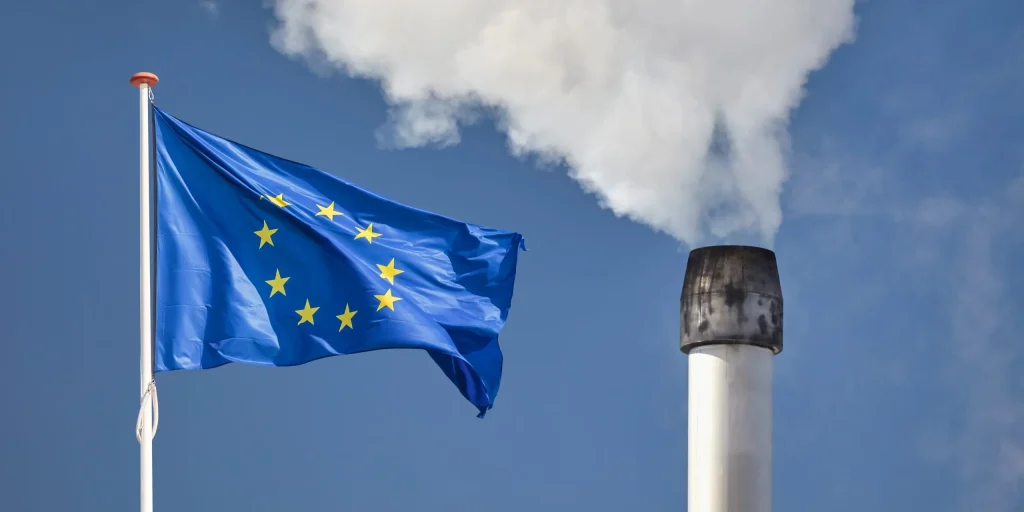The European Union (EU) has just made a major shift in its much-vaunted “carbon tax” scheme, introduced in 2017 and based on the “polluter pays” principle.
Heavily criticized at the time of its implementation—particularly in France, where it triggered a wave of widespread public indignation, especially among road users—this energy levy is now set for a “softening.”
Starting in 2026, only companies that import polluting products will be subject to the new iteration of the European carbon tax. Through this change, the EU aims to strike a balance between combating climate change and protecting the European economic area from a surge of offshoring to countries with laxer environmental standards, such as China.
A Targeted Tax for Optimal Efficiency
According to Mohamed Ghazli, an expert in energy transition, the European Commission has proposed a Carbon Border Adjustment Mechanism (CBAM), which aims to make European importers pay for the environmental cost of their products. The goal is twofold: to encourage more environmentally friendly production and to protect European manufacturers, who are subject to strict CO2 regulations. In practical terms, only companies that import more than 50 tons per year of materials like steel, cement, or aluminum will be taxed.
A Delicate Balance to Maintain
Furthermore, the majority of European companies will be exempt from this new regulation. This approach was confirmed Tuesday by the Council of the European Union and unanimously supported by all 27 member states. They approved the proposed changes during a meeting in Brussels, signaling strong political will to reconcile climate ambitions with economic pragmatism.
The European Parliament, for its part, had already expressed support for exempting more than 90% of companies.
Protecting Industry Without Sacrificing the Environment
It is also important to note that although the tax will only affect a minority of companies, it will still cover about 99% of emissions related to imports. This, according to the Commission, avoids placing a heavy administrative burden on small businesses while maintaining the environmental effectiveness of the measure. The policy also aims to slow the trend of offshoring to countries with more lenient climate regulations.
A New Reality for Importers
Moreover, European companies that import high CO2-emitting products will now be required to purchase emissions certificates. This is equivalent to paying a tax proportional to the carbon price in Europe. This obligation could lead to downward pressure on the prices demanded from suppliers in China, South America, or the United States—or encourage companies to shift toward European suppliers who are already subject to this taxation.
Toward a Broader System by 2030
Although the mechanism initially targets high-carbon products like cement and steel, it is expected to gradually expand to cover all industrial goods by 2030. This phased strategy allows for a “smooth transition” while laying the groundwork for a more comprehensive transformation of supply chains.
As Mr. Ghazli notes, “The carbon border adjustment aims to create climate fairness between European manufacturers and foreign competitors by imposing a similar carbon cost on both.” This, in his view, is a way to enhance the environmental impact of EU policy while preserving industrial competitiveness.
In short, this reform marks a major step in European climate policy. By targeting the most polluting importers while sparing small businesses, the EU demonstrates that it can combine environmental responsibility, fairness, and economic efficiency. The final showdown will now take place in Parliament to finalize the details of this new green trade era.

